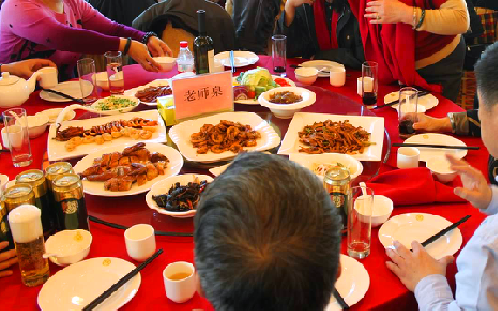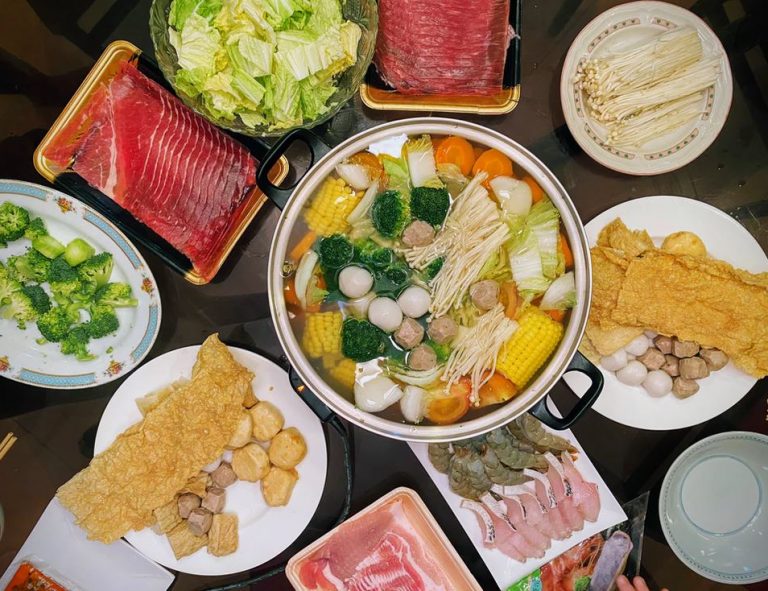20 Great Suggestions To Taste the Regional Flavors of China
Wiki Article
Top 10 Tips For Exploring Local Cuisines Of China
1. Learn about the eight culinary traditionsTip Learn about the eight major Chinese foods: Sichuan (Cantonese), Shandong (Jiangsu), Fujian (Fujian), Hunan (Anhui) and Zhejiang. Each one has its own distinct flavors, cooking techniques and food items.Pro It can be used to plan your meals based on what you like.Cons: It can be difficult to keep track of the subtleties of every cuisine.
2. Accept local specialtiesTip: Try signature dishes from the region you're visiting, like Peking Duck in Beijing, Xiaolongbao in Shanghai, or Hot Pot in Chengdu.Pro: With a rich and diverse cultural background authentic dining experience can be guaranteed.Con The exploration of different foods may be limited when you're in one particular region.
3. Be aware of the local flavoursTip: Sichuan food is hot and dull. Cantonese cuisine is light and refreshing. Jiangsu dishes tend to be sweet and delicate. Choose dishes based on your spice tolerance.Pro Tip: Avoid ordering meals that you might not like.Con: Some flavor profiles might require some testing.
4. Enjoy Street FoodBe adventurous and try local food items. Explore local cuisines.Pros Street food is inexpensive, quick and tasty and is a fantastic way to see local culture.Cons: Hygiene concerns may occur occasionally. Select vendors who do a lot of business.
5. Learn Basic Dining EtiquetteTips: Be aware of Chinese dining customs, such as sharing dishes family-style, and avoiding placing chopsticks in rice.Pro: Shows respect to local traditions and enhances your dining experience.Con: Took some time to adjust to new ways of life.
6. Ask Locals for RecommendationsLocals are often able to give you an idea of the most popular restaurants or eateries in a particular area. Don't be afraid to ask for advice.Avoid tourist traps and discover hidden gems.Cons: Language barriers could make communication challenging.
7. Be Open to Unfamiliar InputsTip: Regional cuisines could include unusual ingredients, such as bamboo shoots, lotus root or stinky tofu. Be curious about unfamiliar foods.Pros: Increases your knowledge of Chinese food culture.Con: Certain dishes might not fit your taste buds or dietary restrictions.
8. Dietary restrictions are possible to accommodateLearn Mandarin phrases for preferences or allergies. "Wo chi rou", (I don't like meat) is a good example.Pro: Provides a safe eating experience that is tailored to your preferences.Con: Certain cuisines have a few options for those who are restricted in their diet.
9. Mix regional and local drinks with food.Try local drinks such as tea from Fujian and baijiu north China.Pro: It enhances food and provides a more engrossing experience.Cons: Some people may not like the strong flavors of baijiu.
10. Avoid OverorderingTip. Chinese dishes tend to serve in a family-style. Therefore, it is best to order with caution. It is possible to include more food if you want.Pros • Reduces food waste. Allows you to try multiple meals.Cons: There is a temptation to spend too much money on food due to the wide variety.
Pros to exploring regional food styles in ChinaDiverse Flavors: Taste a wide array of flavors, techniques, and ingredients.Cultural Insight: Increasing your knowledge of regional traditions and the identities of each.Cost-Effective - A lot of local meals are inexpensive.Memorable Experiences: Eating the most famous dishes of their region of origin can create lasting memories.Pros and Cons of Exploring Chinese Regional CuisineHygiene Concerns: Some street food or small restaurants may not meet international cleanliness standards.Language Barriers: The menus and explanations are usually only available in Mandarin. It makes it difficult to place orders.Unfamiliar Ingredients: Certain flavor or textures may be challenging for certain individuals.Dietary limitations: In certain areas, vegetarians and vegans as well as those suffering from food allergies may be unable to eat.If you stick to these suggestions and are a bit adventurous, you will be able to explore the numerous delicious regional Chinese dishes while navigating all the challenges. Read the top taste the regional flavors of China for more recommendations including Chinese food you must try, top Chinese food experiences, a tour of China regional cuisine, explore diverse Chinese dishes, journey through China food culture, China famous food destinations, China food heritage revealed, discover China regional dishes, taste your way through China, explore diverse Chinese dishes and more.

Top 10 Tips For Rituals To Follow When Visiting Famous Chinese Temples
1. It is important to adhere to the rules and customs of your temple. Be aware of them particularly when you are participating in ceremonies or entering sacred spaces.Pro: This signifies respect for local customs as well as the sacred temple space.Con: It's difficult to understand the rules for temples that have intricate rituals.
2. Respect and Be quietKeep a quiet and respectful attitude and keep your voice quiet when you perform rituals or inside the temple. Avoid speaking loudly or laughing.Pro: Creates a serene environment for worshipers and displays respect for.Cons: The silence can be awkward if you're not familiar with the culture or the environment.
3. Dress modestlyTip: Dress respectfully such as long pants, dresses, or skirts and avoid revealing clothing. Some temples provide wraps or scarves to wrap arms.Pro: Shows respect to sacred space and worshipers.Con: May require additional planning or clothing if you're visiting on a hot day.
4. Observe Offerings RitualTips: Wait until the others are done with their rituals and follow the lead of the locals if you'd want to take part in an offering (such as fruits or incense).Pro: It will demonstrate that you are respectful of the traditions and customs.Cons: It may be awkward to take part in a ritual when one is not familiar with it.
5. It is not a good idea to interrupt a prayer or meditationBe careful not to disturb worshippers who are in meditation or praying. Don't snap pictures or talk to others when you practice spirituality.Pro: Shows respect for culture, and creates an environment of calm reverence.Con: It can be tempting to take pictures of your moments to keep them for later references, but it could make you feel like your actions are intruding.
6. Lighting of IncenseTips. Incense burning as part of a Chinese temple ritual is very common. If permitted, light the incense as a sign of reverence to gods. In both hands, bow slightly when you are offering it.Pro: Shows you're active in temple activities and respects the traditions.Con: Incense is difficult to handle for some travelers, and can result in a lack of respect.
7. Do not touch Sacred Statues or objectsAvoid touching temple or sacred statues unless asked to do so.Pros: Maintains the sacredness of temple and reverence in the sacred space.Con: Can cause confusion if you're not aware of temple boundaries.
8. Be aware of Temple HierarchyTips: There could be different levels in some temples. Do not step on altars or sacred statues. Make sure you know the proper place to bow.Pro: Be respectful of the temple and keep it in good order.Cons The hierarchy isn't always clear and requires additional effort to determine what's acceptable.
9. Keep Offerings HumbleTips: When you bring gifts (flowers or fruits, as well as money) Make sure that they are in a modest manner and adhere to local customs. The cost of extravagant gifts or expensive ones might not be received well.Pro: Displays humility and adheres to the local customs.Con: It may be difficult to know which type of product is appropriate without assistance from the local area.
10. Participate in Temple Events If InvitedTips: Many temples host special events like ceremonies, prayers or even holidays. If you're asked to participate be respectful and join in, following the direction of the crowd.Pros: You'll be more connected to the temple and the local society.Cons: It may be uncomfortable to participate in uninitiated rituals when one doesn't know the correct protocol.
The benefits of watching rituals in TemplesCultural Immersion: By participating in rituals, you can learn more about the traditions and culture of China.Respectful Interaction: Watching and engaging respectfully creates positive relationships with people in the area and temple personnel.Personal Growth: Engaging in religious or spiritual practices can be meaningful and enriching experience.Being a part of the temple ceremonies will leave you with lasting memories.Pros and Cons of Following Rituals in TemplesUnknown. When guests are new the rituals may cause anxiety and confusion.Cultural ErrorsLanguage Barriers may not be able to understand the meaning of rituals and instructions because of an inability to communicate due to a language barrier.Physical discomfort: Certain rituals such as bowing and sitting for prolonged durations of time may be physically taxing.If you adhere to these guidelines and keep in mind local customs and traditions, you will be able to visit China's famous Temples and engage in their religious practices without causing offence. Follow the top a tour of China regional cuisine for site info including authentic Chinese culinary adventures, China food heritage revealed, a culinary journey through China, taste the regional flavors of China, authentic Chinese culinary adventures, Chinese food you must try, savor China regional food specialties, top Chinese food experiences, explore China food scene, savoring the best of Chinese cuisine and more.
